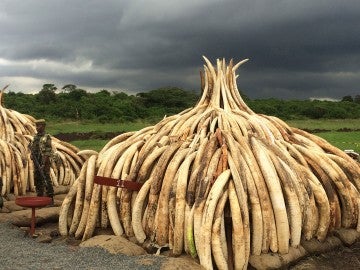Unfortunately, these fascinating animals also have a long history of abuse at the hands of humans. Every year, poachers kill tens of thousands of wild African and Asian elephants for the illegal ivory trade. And in places where their natural habitat has been taken over by development, herds may be subjected to lethal culls. Elephants in captivity may suffer brutal training for circuses or other traveling animal acts, or they may endure lonely lives in roadside zoos where they’re forced to provide rides for tourists.

In the wild, elephants live in close family groups and roam up to 30 miles a day. Few captive environments can provide a decent life for these sensitive and social animals.

Elephants in the wild can survive 50 to 60 years, but those in captivity die decades earlier usually because their feet and joints give out.

For every animal saved, countless others are still suffering. By stepping up for them, you can create a future where animals no longer have to suffer in puppy mills, factory farms, testing labs or other heartbreaking situations. Start saving lives today!



